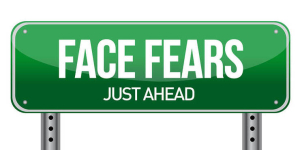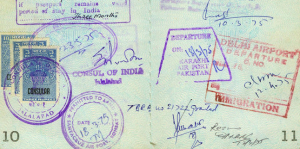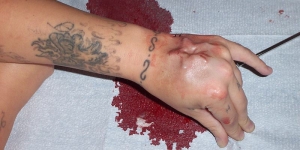One of life’s curious truths is that no one appreciates being lied to, yet everyone engages in the activity. In fact, some research suggests we may be lied to as many as 200 times a day. Strangely, even with so many opportunities for lie catching, the average person detects lies with only 54% accuracy–scarcely better than chance. Thus, most liars get away with lying most of the time, and innocent people are often disbelieved. Why do we make so many mistakes?
One reason is because of the myths revolving around the subject. When trying to evaluate truthfulness, most are likely relying upon lie-detecting cues that don’t actually exist, basing decisions on intuition instead of science, or jumping too quickly to conclusions. The first step to fixing these problems is debunking commonly believed myths about the process of lie catching, and exposing the true science behind it.
Myth 1: Polygraphs detect lies
Polygraphs definitely have their place; however, they do not detect lies directly. They expose changes in the autonomic nervous system–which controls the heart rate, blood pressure, skin temperature, etc–and illustrate and record a suspect’s emotional arousal during questioning. However, they can only detect that some emotion is being felt; in no way can polygraphs detect which emotion is being felt, or why.
This induces problems in that many innocent people could become emotional over crimes they were not involved in. In his book, Emotions Revealed, Paul Ekman gives a classic example of an innocent man wrongly suspected due to polygraph testing. “Consider the case of an army sergeant who was the first person to discover the naked, dead body of his next door neighbour, the attractive wife of another sergeant. During interrogations, he denied having committed the murder, but he failed the polygraph test 3 times. When physical evidence led the true murderer to confess, he was absolved of the crime. So why did the sergeant fail the polygraph? …When he saw her nude body, he felt some sexual arousal even though she was dead. He felt very guilty about those feelings. Whenever asked about her death and discovery of her body, his guilt was aroused, and that emotion caused him to fail the polygraph test.”
Assuming quite generously that the polygraph is 90% accurate, this still entails that out of the ~1 million polygraphs issued each year, about 100,000 people are incorrectly identified to be truthful when they are liars, or liars when they are truthful. Truthfulness should never be judged by the polygraph alone.
Myth 2: Certain body language signals indicate deceit itself
According to a study by Charles Bond, 72% of people believe avoiding eye contact is a sign of lying. However, eye movements are entirely voluntary, and therefore it is very easy for liars to control the direction of their gaze. Because so many people expect liars to have shifty eyes, they tend to actually make more eye contact than a truthful person.
Eye contact, or lack thereof, is not in itself a signal of deceit–in fact, there is no facial expression, gesture, or any such thing that indicates deceit itself. Truthfulness is evaluated by detecting inconsistencies between a person’s words and their body language, tone of voice, and facial expressions. For example, if a suspect claims not to know John Smith, yet displays signs of anger at the mention of his name, this raises suspicion that the suspect is lying because he would have no reason to be angered by the name of a stranger. (However, lie detection is a complex business. Simply because he shows signs of anger after the mention of ‘John Smith’, doesn’t necessarily mean he’s angry at the man. He could be angry for many other reasons, such as being asked so many questions, or being held under suspicion when he believes himself to be innocent.)
Myth 3: Clues to deceit are applicable to everyone
There are enormous differences in the demeanour of every individual. Some people commonly make speech errors, stutter, pause often, and/or use few illustrators in their speech. Because this is their typical demeanour, such behaviour should not make them suspects for deceit. However, if a highly articulate, smooth talking, confident person began to stutter and pause, they should be suspected. Thus, judgements should be based off of changes in a suspect’s behaviour. In addition, one change should never be taken as a foolproof signal of deceit. If a typically vibrant person begins to use few illustrators in conversation, he may simply be tired. In order to detect deceit accurately, a cluster of signals indicating the same thing must be present.
Taking all of this into account, three things become clear. First, in order to catch lies effectively, one must have a strong grasp on body language. Otherwise, it will be impossible to spot inconsistencies and behavioural changes. Secondly, a lie catcher must be familiar with the person who may be lying, or they will have no basis for comparison. Lastly, lie catching is not an easy business, and it it nearly impossible to ever know for certain if someone is lying. This science is tentative because whether or not a person’s body language indicates deception depends entirely on the person and the situation. There are no universal indications.
With enough education and training, you can increase your ability to catch lies by 25-50%. For training courses and more information on lie detection, visit paulekman.com.
Chana Elizabeth Bainter
Image Credits: ginasanders/BigStock.com







